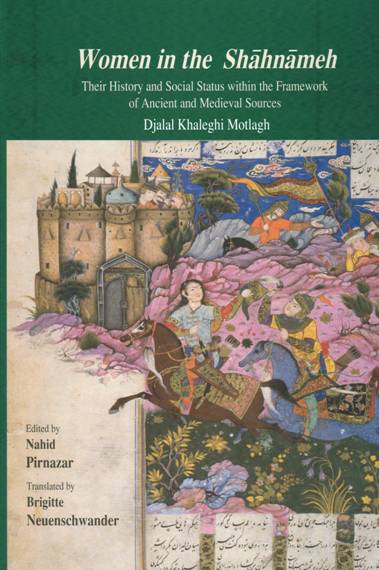
It is not often that I come across a book, the subject of which is so exciting, I'm compelled to praise it, even before I've had a chance to read the book. Women in the Shahnameh; Their History and Social Status within the Framework of Ancient and Medieval Sources, by Djalal Khaleghi Motlagh, edited by Dr. Nahid Pirnazar, and translated by Brigitte Neuenschwander, is such a book.
Last week, I had two calls from two different ladies, whose worthwhile work in the Fariborz Fred Matloob Foundation I very much respect, inviting me to attend a book signing and speaking event for the launch of Women in the Shahnameh.
As we begin to celebrate March as National Women's Month, my eternal commitment to raising and strengthening the status of women -- both in my world and in my books -- is as strong as ever. Thus, as a staunch admirer of Dr. Pirnazar's work, I found myself on Sunday at the residence of the Shooshanis, who hosted this event, opening their beautiful home to an attendance, which to my pleasant surprise, was more than 100 strong. The book, I mused with a wide smile, is alive and kicking.
I learned that Nahid Pirnazar first discovered the German text of Die Frauen im Schahname (Women in the Shahnameh) on the dusty shelves of the UCLA library while pursuing her doctorate degree in 1997. Despite Khaleghi's seminal work being of critical importance to a vast array of disciplines, the text in fact had never been translated into Persian or English. Upon meeting Professor Djalal Khalegi Motlagh at an international conference in Hamburg, Germany in 2006, Dr. Pirnazar secured his blessing to translate the work into English and eventually, Persian. With the help of Brigitte Neuenschwander, Dr. Pirnazar expertly lifted Women in the Shahnameh from its original pages for republication within the context of a 21st century, global market audience.
Women in the Shahnameh explores the vital role of the female gender as expressed within that great national epic of Iranian culture, the Shahnameh. Viewing the Shahnameh for the historical document and cultural cornerstone that it is, Dr. Khaleghi's original work (first published in 1971) sought to shed light on the position and practices of early Islamic women.
Analyzing the variety of female figures and expressions of womanhood throughout the Shahnameh, Dr. Khaleghi does well to outline notions of gender within the pre-Islamic familial framework and society at large. Undoubtedly, the female characters contained within the Shahnameh, and brilliantly brought to life by Khaleghi, Dr. Pirnazar and Neuenschwander in Women in the Shahnameh, appear as a fulcrum upon which the contemporary female may stand proud.
